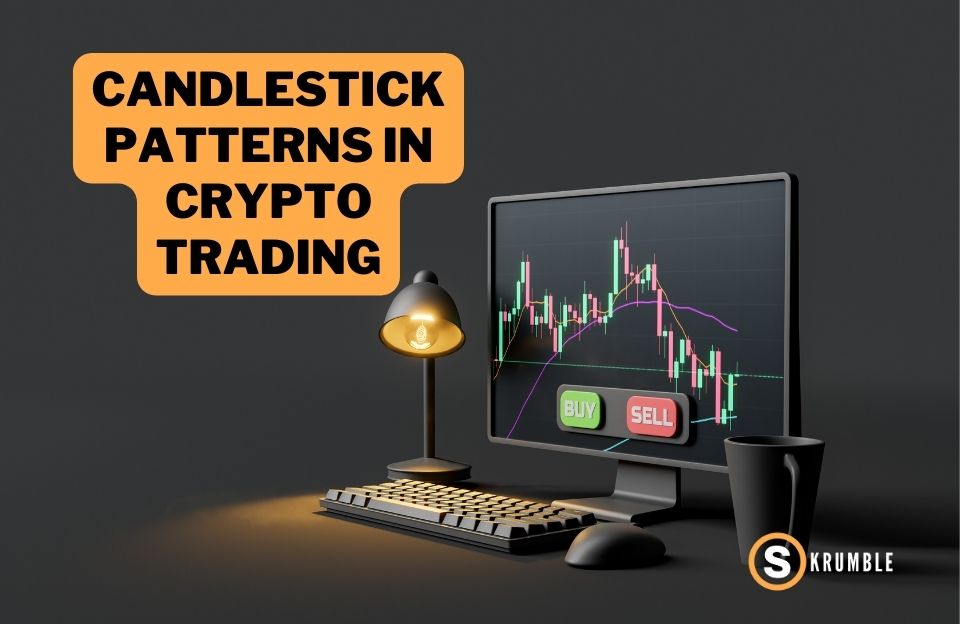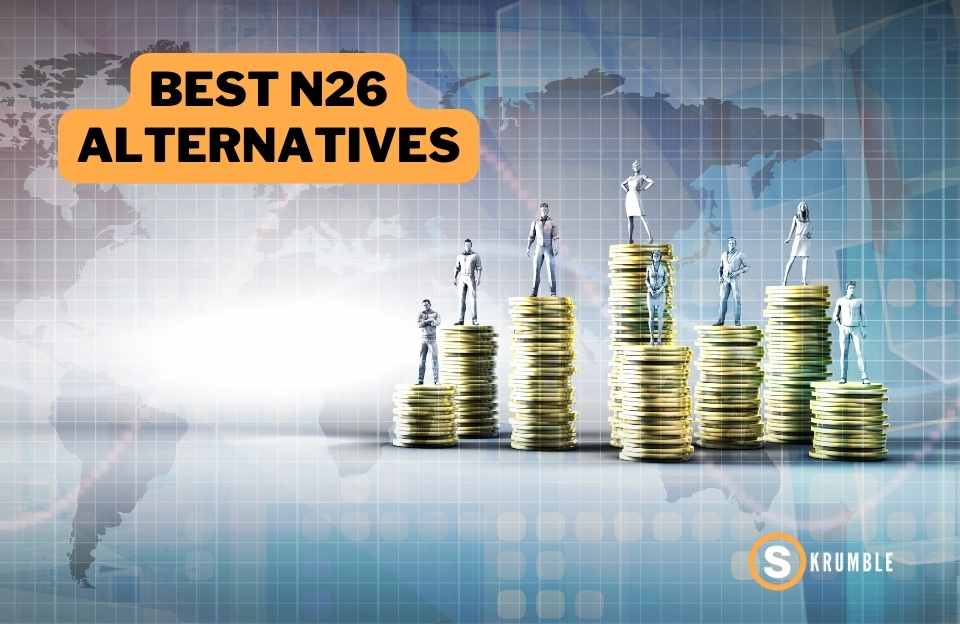Blockchain and Artificial Intelligence (AI)
Swen Keller

Blockchain and Artificial Intelligence are two groundbreaking innovations that have emerged as tech frontrunners, promising to reshape the future in ways one couldn’t even imagine.
Blockchain is a decentralized and secure digital ledger that records transactions across a network of computers. Artificial Intelligence, or AI, is the simulation of human intelligence in machines. This collaboration enhances the security, transparency, and intelligent decision-making capabilities within the digital realm, opening doors to transformative possibilities. This blog will explain how both these forces complement each other, exploring real-world applications, potential challenges, and future trends.
What is Artificial Intelligence?
Artificial Intelligence, often referred to as AI, is the intelligence demonstrated by machines, making them capable of performing tasks that typically require human intelligence. AI systems are designed to learn from experience, recognize patterns, interpret data, and make decisions. It encompasses a range of technologies, including machine learning and natural language processing.
What is Blockchain?
Blockchain is a revolutionary technology serving as a secure and decentralized digital ledger. It operates on a distributed network of computers, forming an unalterable chain of blocks, each containing a record of transactions. The fundamental concept behind blockchain is to create a transparent, tamper-proof, and trustless system for recording and verifying transactions.
How Do Blockchain and AI Integrate?
When we bring together Artificial Intelligence and blockchain, it’s a technological revolution. This fusion is more than just a partnership; it’s a game-changer in the tech world. Let’s break down how these two cutting-edge technologies work hand in hand:
Transparent Data Source
Blockchain’s transparent nature serves as a cornerstone for training AI applications, offering more than meets the eye. The structure guarantees that data isn’t controlled by a single entity, promoting fairness and eliminating the risk of manipulation. Each transaction, represented as a block, is linked to the previous one, forming an unalterable chain. This not only enhances transparency but also creates a secure and tamper-resistant environment for data.
The traceability of nodes, which are essentially computers participating in the blockchain network, goes beyond mere verification of data origin. It establishes a comprehensive audit trail, recording every step of data evolution. This means that not only can the starting point of data be verified, but every modification or addition along the way is also recorded.
Authenticity
Blockchain’s digital ledger unfolds a multi-layered approach to authenticity, surpassing the mere recording of transactions. At its core, this transparent record becomes the bedrock of trust by revealing the intricate framework supporting AI.
Firstly, the transparency offered by blockchain addresses a crucial challenge in AI – clear explanations of its decisions and processes. The ability to understand and articulate the decisions made by AI algorithms is essential, especially in critical applications. Blockchain’s ledger acts as a transparent mirror, allowing stakeholders to comprehend the inner workings of AI processes. This transparency demystifies decision-making and empowers users with insights into the logic and reasoning behind AI-generated outcomes.
Privacy Protection
When it comes to technology, safeguarding your privacy is a priority, and AI and blockchain technology collaborate seamlessly to achieve this. Blockchain applies cryptographic techniques to keep your data safe during AI training and operations.
Now, what makes this protection robust is the privacy infrastructure of blockchain. Blockchain goes beyond securing; it creates a fortified vault that makes sure that your sensitive information remains confidential.
Augmentation
AI’s remarkable ability to swiftly comprehend and correlate data brings a new level of intelligence to blockchain-based business networks.
AI acts as a dynamic analyst, processing vast datasets at remarkable speeds. In this partnership, blockchain becomes the facilitator, confirming that AI has access to extensive datasets for analysis. This collaboration amplifies AI’s capabilities, which further results in actionable insights.
Reading Efficiency
When the efficiency of reading data in blockchains faces limitations, AI proves to be a reliable solution for overcoming these challenges. Innovative protocols and algorithms, such as the TTA-CB protocol utilizing PSO algorithms, mark the frontier of this collaborative effort.
Here AI takes the role of a speed-enhancing tool for blockchain applications, breaking through the barriers that often slow down data queries. The TTA-CB protocol, driven by PSO algorithms, optimizes the speed and efficiency of how information is accessed within blockchain frameworks.

6 Ways AI and Blockchain are Transforming the Tech Industry
Now that we’ve dissected how AI and blockchain integrate with each other, let’s explore the tangible outcomes of this collaboration. We’re about to see how these tech powerhouses join forces to bring real-world changes in innovation, security, and our digital landscape.
Fortifying Security
AI algorithms take center stage by analyzing transaction patterns and data, stepping in early to detect and prevent blockchain fraud.
But there’s more to it. AI, infused with machine learning prowess, steps up to enhance the privacy of transactions. By sifting through vast datasets, AI becomes a vigilant guardian, spotting patterns that might indicate potential data theft or unauthorized access to user accounts. This proactive stance empowers businesses to swiftly deploy security measures, including automatic alerts for suspicious activities, and safeguarding sensitive data in real-time.
Optimizing Operations
Artificial intelligence can help companies gather and analyze vast amounts of data. A major part of running any business is access to relevant information and its accuracy. In this regard, blockchain is a very effective tool, as it affords swift access to new information that is completely transparent and immutable.
The application of AI can then further add to this advantage by enhancing the process of data analysis. AI-powered algorithms can process large amounts of data from blockchain networks in real-time, identify patterns that human analysts might miss, and generate insights to support business operations. All of this is accomplished at great speed, as many time-consuming manual processes get automated, further improving operational efficiency.
Furthermore, using artificial intelligence can also streamline such aspects of running a business as supply chain management and financial transactions. AI can automate financial processes on the blockchain, such as invoicing and payment processing, eliminating the need for intermediaries. It can also help track products on the blockchain and increase authenticity and transparency, as all members of the network can see the same records.
Revolutionizing Smart Contracts
Think of contracts that work like computer programs, automatically performing, controlling, and documenting important events and activities according to the agreed terms. These are smart contracts, a game-changer in private blockchain applications.
Smart contracts go beyond just recording agreements; they can create new digital assets or tokens, opening up a world of possibilities. Now, picture these smart contracts teaming up with AI systems. The result? A turbocharged process with automated real-time vulnerability screening and debugging of contract files.
This means the contract owners get a heads-up on any security flaws before sharing it with clients, promising airtight security.
In the insurance industry, smart contracts can interface with predictive AI systems using blockchain Smart Contract APIs. This integration revolutionizes the calculation of acceptable risk and premium expenses, introducing a streamlined and efficient process.
Synergizing Decentralized Finance(DeFi)
The collaboration between AI and blockchain technology has the potential to significantly reshape various industries, with decentralized finance (DeFi) and Web3.
Smart contracts on blockchain simplify processes and cut out middlemen, yet creating them can be complex. Enter AI, exemplified by ChatGPT, uses natural language processing to make smart contract creation more accessible. This simplification reduces errors, improves coding efficiency, and welcomes new developers.
AI’s impact doesn’t stop there; it optimizes user experiences in Web3 marketplaces. By understanding user preferences, AI tailors recommendations, connecting buyers and sellers seamlessly. AI-powered chatbots elevate customer service, and blockchain assures the genuineness of goods.
AI’s ability to analyze vast data sets identifies trends, predicts supply and demand, and aids decision-making for Web3 marketplace users and operators.
Decoding the Blockchain Dilemma
When we think of blockchains, cryptocurrencies often come to mind – a space where transparency reigns, and anyone can engage with the ledger. Public blockchains uphold user privacy while ensuring equal treatment for all participants. However, as these public blockchains grow, so does the demand for processing power, presenting challenges for PCs with varying capabilities.
Enter AI, a key player in the future of blockchains. AI algorithms assess each machine’s performance and specifications, assigning tasks and node types accordingly. This dynamic allocation of resources optimizes network efficiency – a task that traditional computers or human operators find challenging in the domain of public blockchains with myriad nodes.
Yet, public blockchains grapple with privacy and control issues, particularly in enterprise applications. It’s impractical to grant every participant unrestricted access to the entire database. In response, private blockchains emerged as a viable alternative. Here, a single authority or organization retains ultimate control, enforcing strict authentication measures for network access.
Improving Supply Chain Transparency
In the world of supply chains, AI and blockchain are driving a new era of transparency and efficiency. These technologies enable the tracking of products, preventing tampering and building trust among stakeholders. Any errors or disruptions in the supply chain can be swiftly identified and addressed for a smooth workflow.
The combination of AI and blockchain digitizes physical assets, creating transparent and error-resistant records. This not only streamlines management but also enhances overall visibility. AI’s machine learning processes are crucial for tasks like inventory forecasting and demand prediction.
Integrating IoT (Internet of Things) with AI and blockchain takes supply chain visibility to the next level. By placing IoT sensors on goods, companies can monitor their condition in real-time, securely recording data on the blockchain. This integration provides timely insights for manufacturers, freight forwarders, and port operators, leading to more informed decisions and increased efficiency.

The Future of Blockchain and AI
As we peer into the future, the prospects for both blockchain and AI are nothing short of remarkable. Insights from Next Move Strategy Consulting paint a compelling picture of the trajectory ahead. The current valuation of the AI market stands at an impressive nearly 100 billion U.S. dollars. Still, the forecast is truly breathtaking – a twentyfold increase anticipated by 2030, propelling it to an astonishing two trillion U.S. dollars.
Simultaneously, the global blockchain technology market, which was valued at 5.85 billion U.S. dollars in 2021, is poised for an extraordinary surge. Projections indicate a remarkable ascent to 1,235.71 billion U.S. dollars by 2030, accompanied by an impressive compound annual growth rate of 82.8 percent.
This surge proves the profound impact these technologies are set to have on various industries, promising a digital landscape that is both advanced and intelligent. The fusion of blockchain and AI is a powerful combination shaping the future of technology and innovation, proving to be a lasting trend rather than a fleeting one.

FAQ
Most frequent questions and answers
Yes, blockchain is used in artificial intelligence. The transparency and security features of blockchain make it a reliable and trustworthy data source for training AI algorithms. The tokenization capabilities of blockchain incentivize data sharing, providing a transparent and secure mechanism for individuals and organizations to contribute valuable data for AI training.
Blockchain and AI can be used together to enhance data security, create decentralized AI models, establish transparent data marketplaces, automate transactions with smart contracts, tokenize AI services, integrate with supply chains, track data provenance, and implement decentralized governance through DAOs.
Blockchain benefits AI by ensuring data integrity and transparency through its immutability and decentralized structure. It also facilitates incentivized data sharing, automates transactions with smart contracts, and enables decentralized AI models, reducing risks and enhancing trust in AI outputs.
AI algorithms can be employed for real-time vulnerability screening and debugging of smart contracts on the blockchain. AI’s analytical capabilities can also be harnessed to optimize the efficiency of blockchain networks.
AI and blockchain are often seen as complementary technologies rather than competitors. While AI can enhance certain aspects of blockchain, such as security and efficiency, it doesn’t “take over” the fundamental principles of blockchain. The collaboration between AI and blockchain is more about synergy, combining their strengths to create innovative solutions.
The power of AI and blockchain lies in their ability to create secure, transparent, and intelligent systems. Blockchain ensures the integrity and transparency of data, while AI adds advanced analytics, decision-making, and automation capabilities. Together, they have the potential to revolutionize industries by providing trustworthy and efficient solutions.
Skrumble.com provides all its content for informational purposes only, and this should not be taken as financial advice to buy, trade, or sell any investment instruments or products, including but not limited to cryptocurrencies, or use any specific exchange. Please do not use this website as investment advice, financial advice, or legal advice, and each individual’s needs may vary from that of the author. Investing in financial instruments, including cryptocurrencies, carries a high risk and is not suitable for all investors. It is possible to lose the entire initial investment, so do not invest what you cannot afford to lose. We strongly advise conducting your own research before making any investment decisions. This post includes affiliate links with our partners who may compensate us.
To view our privacy policy read here.






